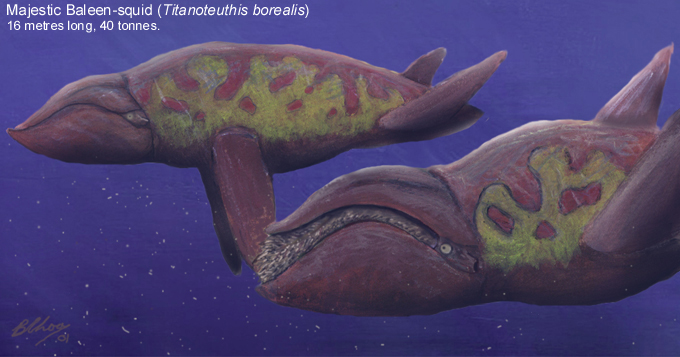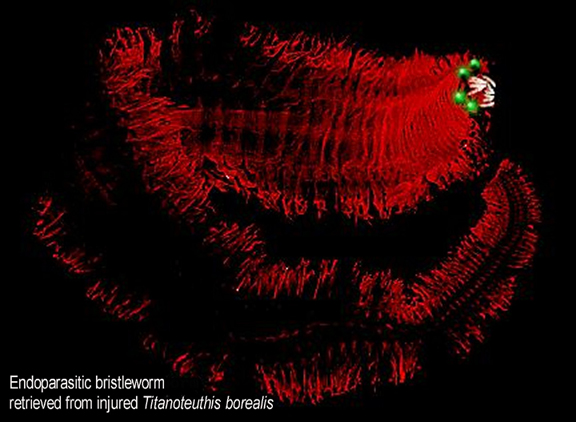

The majestic baleen-squid is the largest of the skimming balaenateuthians. It lives within Arctic and sub-arctic waters and spends much of its time close to the edge of the ice. They feed on very small zooplankton, primarily copepods, steropods and mysids.Non-migratory baleen-squids like the majestic tend to spend more time in close association with others of their kind and rely more on visual communication than those which disperse to migrate (and thus rely more on vocalization to keep in touch over long distances). The majestic baleen-squid has beautifully patterned flanks and back, when an animal is near others of it's kind it is able to alter these patterns thanks to fantastically coordinated chromatophore activity. This creates the illusion of blobs breaking off the red dorsal stripe and slowly traveling across the yellow flanks, often fusing with other blobs to form larger ones. This is the source of this animal's nickname, the "Lava-lamp whale". Precisely what these signals convey is unknown.

This unnamed creature, recovered from the body of a magestic baleen-squid, looks like a science-fiction alien. To an Arel biologist, however, the worm would be far more familiar than its balaenateuth host. It is, in fact, a bristleworm, a member of the order Polychaeta, a group of annelids quite common on Home-Earth.This one has clearly adopted a commensal lifestyle, living among the filter-tentacles of its host and feeding on trapped invertebrates and fish larvae the squid has yet to swallow.his one has clearly adopted a parasitic lifestyle, attaching itself to the intestine of the giant baleen-squid and absorbing digested food directly through its skin.(Picture by Drhoz)The reproductive cycle of this organism is unknown.
(Text by Drhoz and Daniel Bensen)
Back to Spec